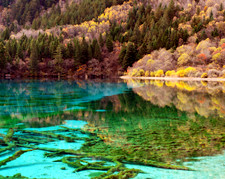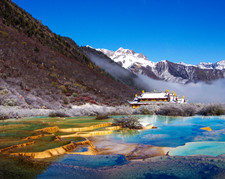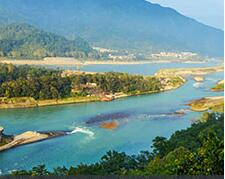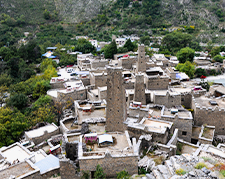Trip Details
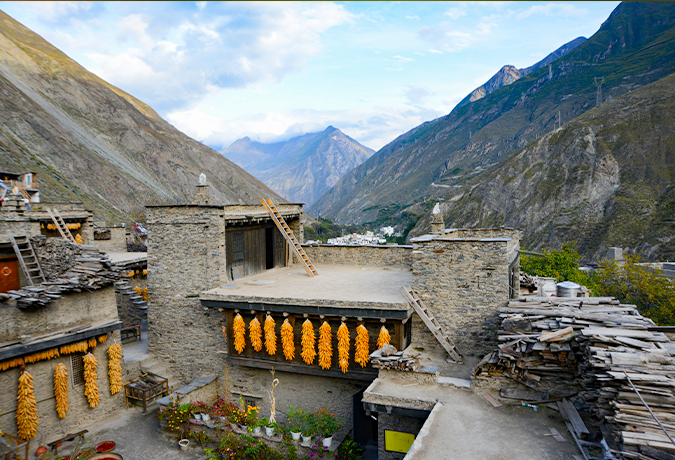
12 Days In-depth Experience of Ethnic Customs around the Giant Panda Habitat in Northwest Sichuan
Date: Aug. 11 to Aug. 22, 2026
Price: From 2760USD/PAX
Trip Focus: Tibetan-Qiang Customs + Cultural Heritage
Status: Open to Booking
Route: Chengdu-Jiuzhaigou-Huanglong-Songpan-Ruoergai-Barkam-Taoping Qiang Village-Wolong Panda Base-Dujiangyan-Anren Ancient Town-Chengdu
Trip Code: A007
Overview
Around the giant panda habitat in northwestern Sichuan, an in-depth experience tour that integrates ecology and diverse ethnic cultures is waiting to begin. In Zoige, you will follow herdsmen in the early morning to milk yaks and make butter tea. In the afternoon, you will sit in a Tibetan tent and listen to the old grandma tell the legends of King Gesar. At night, you will dance the Guozhuang dance around the bonfire, feeling the boldness and piety of the Tibetan people on the grassland. In Taoping Qiang Village, you will walk through the watchtowers built with yellow mud. While learning about the panda habitat under the guidance of professional guides, you will also discover how people of all ethnic groups protect this ecological pure land with the traditional belief in "sacred mountains" and "holy lakes", making this journey an in-depth dialogue between nature and humanity.
Highlights:
• Have an in-depth experience of the multi-ethnic customs around the giant panda habitat.
• Enjoy a variety of landforms including the glacier, alpine meadow, shrubbery, virgin forest, and subtropical forest during our journey.
• Step into Tibetan families and experience their daily life.
• Attend the ethnic culture lecture, where the tour guide will give you an in-depth explanation of the cultural history of various ethnic groups.
• Step into Qingcheng Mountain and learn about the development history and culture of Taoism.
• Strong and professional support from our team will ensure you a safe trip, tasty dishes in the remote area, the best spots for photographing the highlights of the tour, different cultures and special stories share from your guide, etc.
Introduction to Trip Destinations and Activities:
Chengdu Research Base of Giant Panda Breeding
Holding the distinction as one of the world’s largest panda base, Chengdu Research Base of Giant Panda Breeding (Chengdu Panda Base) attracts tourists and wildlife enthusiasts worldwide. Conveniently located a short drive away from downtown, this state of the art research facility comfortably houses more pandas than anywhere else at home and abroad. During your visit, you will see pandas ranging from young cubs to lumbering adults as well as the elusive and adorable red panda.
Jiuzhaigou
Jiuzhaigou National Park was included as a UNESCO World Heritage Site in 1992. Stretching over 72,000 hectares in the northern part of Sichuan Province, the Jiuzhaigou reaches a height of 2,200m to more than 4,800m, thus comprising a series of diverse forest ecosystems. Here lives about 220 bird species as well as some endangered animals and plant species, including the Giant Panda, Golden Snub-nosed Monkey, Sichuan Takin, and numerous orchids and rhododendrons. Its superb landscapes are particularly interesting for its series of narrow conic karst landforms and spectacular waterfalls.
Huanglong
Huanglong National Park sets within Minshan mountains in Songpan County, with lush green forests surrounding the unique limestone rock formations which are internationally renowned as being one of the world’s largest, undamaged karst landscapes. Huanglong means "Yellow Dragon" which got its name for its special geographical features. With a bird-eye view, the Huanglong National Park looks like a big golden dragon arching across the valley, winding its way between the snow-capped mountain peaks. Huanglong is famous for its "Four Wonders", the colorful pool, snow mountain, canyon, and forest.
Dujiangyan Irrigation System
With over 2,200 years of history, the ancient irrigation system in Dujiangyan is known as the only ancient irrigation project of its kind still at work till now. Built in the 3rd century BC, Dujiangyan Irrigation System is a world-famous irrigation project reflecting the high wisdom of the ancient Chinese people. This project is credited with having turn the vast fertile land in Chengdu Plain into a breadbasket and made it known as a Land of Abundance in China. In 2000, the irrigation system was included in the UNESCO World Cultural Heritage List together with the neighboring Taoist Qingcheng Mountain.
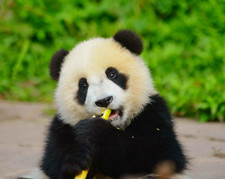
Wolong Panda Base
Wolong Panda Base is a new panda base built with the charity donation from Hong Kong Government after the 2008 earthquake during which the old Wolong Panda Base was damaged. It takes about a 2.5-hour drive from Chengdu to the base. This base is located inside the panda habitat and has the best natural temperature for the pandas. It is an excellent place for people who want to see active panda cubs with fewer crowds. Besides the pandas, it is possible to photograph Eurasian Hoopoe, Red-billed Blue Magpie, and so on. The Wolong Giant Panda Habitat Reserve around this area is one of the most important giant panda habitats in China.
Taoping Qiang Village
Taoping Qiang Village is known as the "Mysterious Oriental Castle". Founded in 111 BC, it has a history of over 2,000 years, serving as a typical representation of Qiang architectural complexes and completely preserving the ancient ethnic characteristics of the Qiang people.Its unique charm lies in watchtower-style castles with underground water networks, extended passageways, and labyrinthine patterns integrating watchtowers, forming a 3D road and defense system covering ground, underground and air.
Mount Qingcheng
Located near the scenic city of Dujiangyan, Mount Qingcheng is one of the best places to visit to gain a deeper perspective on China’s indigenous religion of Taoism. With a history spanning hundreds of years, Qingcheng is the host to a variety of temples showcasing the elegant architecture of Taoist tradition. Visitors to the mountain can navigate a series of staircases winding up through peaceful forests in search of practitioners and shrines dedicated to notable Taoist deities and figures. The peaceful atmosphere and cultural significance of Mount Qingcheng have even earned it global recognition as a UNESCO World Heritage Site.
How Can We Make This Trip Special?
• Many times of running this itinerary for western panda funs, nature and culture lovers enables us to ensure your trip is enjoyable and comfortable in the hidden area.
• A team of passionate guides specializing in panda and wildlife with rich experiences of guiding and solid knowledge about local cultures and places.
• This trip can be customized to better meet your travel style by centering on a different focus.
• 20-plus years of working in the travel industry and serving travelers from all over the world enable us to know how to make great trips for travelers of different travel styles.
What makes AbsolutePanda excellent?
• We are one of the premier travel companies focusing on panda and other wildlife in China.
We use AbsolutePanda as company brand because of our deep love toward panda and our determination to create your absolutely enjoyable panda trips.
Since 2003, our professional tour leaders and wildlife experts have helped thousands of travelers gain an in-depth understanding of Giant Panda and their companion animals, enjoy stunning scenery all over China and explore the authentic local culture.
• Exclusive Quality & Value Guarantee.
We define our quality by well-designed itineraries, stunning destinations, creative interactions, small groups, professional guides, and reasonable prices.
• Explore China in comfort and your style.
We understand each traveler is different. In addition to selected accommodations, meals and vehicles, we would like to show you the real China by an authentic experience with incredible wildlife and lovely locals.
• We care and share.
We believe the best way to help wildlife is through love and appreciation. By bringing nature lovers to enjoy the beauty of nature in China, we hope that local people can know the value of wildlife and learn how to love and appreciate those beautiful creatures living near their villages.
Map
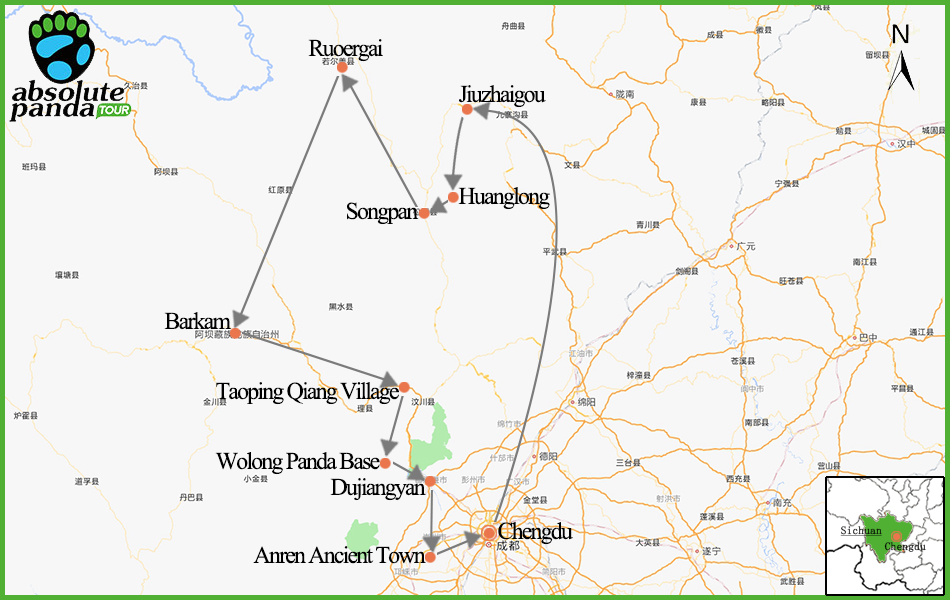
Trip Map
Itinerary
Outline:
Day 1. Arrive in Chengdu. (D)
Airport pick-up. Welcome Dinner and Introduction to the Team and Itinerary.Lecture on the Characteristics of Sichuan's Ethnic Composition.
Overnight: Chengdu
Day 2. Chengdu-Huanglong Jiuzhai Station (2h)-Jiuzhaigou (90km 2h) (BLD)
In the morning, visit the Chengdu Research Base of Giant Panda Breeding. After lunch, head to Chengdu East Railway Station and take a bullet train to Huanglong Jiuzhai Station, then transfer to a vehicle to go to Jiuzhaigou. There, you will learn about the Amdo Tibetans, the history of Amdo Tibetans in Jiuzhaigou, and the characteristics of Bon religion they believe in locally.
Overnight: Jiuzhaigou
Day 3. Explore in Jiuzhaigou. (BLD)
Spend the whole day touring Jiuzhaigou and have an outdoor lunch.
Overnight: Jiuzhaigou
Day 4. Jiuzhaigou-Tibetan and Qiang Museum-Huanglong (123km 3h) (BLD)
After breakfast, head to the Tibetan and Qiang Museum to learn about Tibetan and Qiang cultures, listen patiently to the relevant explanations, and visit Zhongcha Village. After lunch, visit the Fairy Ponds to understand the impact of changes in food sources in the giant panda habitat on pandas, and then take a vehicle to Huanglong.
Overnight: Huanglong
Day 5. Huanglong-Songpan Ancient City Wall-Huanglong (84km 3h) (BLD)
In the morning, we will visit Huanglong. In the afternoon, we will take a bus to Songpan, where we will tour the ancient city of Songpan, taste Hui cuisine, and experience the mutual influence of ethnic cultures in the area where Tibetans, Han people, and Hui people live together.
Overnight: Huanglong
Day 6.Huanglong-Ruoergai(167km 3h) (BLD)
After breakfast, head to Ruoergai and visit Dazha Monastery to learn about Tibetan Buddhism.
Overnight: Ruoergai
Day 7. Explore in Ruoergai. (BLD)
Visit Huahu Lake and call at herdsmen's homes. Spend the whole day touring Ruoergai to learn about Tibetan nomadic culture. There will be a lecture on the life of nomadic peoples and grassland desertification, as well as how to achieve ecological protection and balanced development around the giant panda habitat.
Overnight: Ruoergai
Day 8. Ruoergai-Barkam(316km 5.5h) (BLD)
After breakfast, head to Wache to visit the Wache Stupa Forest and learn about its historical origins. In the afternoon, take a vehicle to Barkam to get to know the Jiarong Tibetans and attend a lecture on historical ethnic changes and the Jiarong Tibetans.
Overnight: Barkam
Day 9. Barkam-Zhuokeji Watchtower-Taoping Qiang Village (165km 2.5h) (BLD)
In the morning, visit the Zhuokeji Watchtower to learn about the history and lifestyle of the Jiarong Tibetans. In the afternoon, take a vehicle to Taoping Qiang Village to understand the rise and fall of the Qiang people in Chinese history, as well as their unique costume culture, dietary culture and architectural culture.
Overnight: Taoping Qiang Village
Day 10. Taoping Qiang Village-Wolong Panda Base-Dujiangyan(89km 1.5h) (BLD)
Visit the Dujiangyan Irrigation Project to learn about the traditional wisdom of the Han nationality and the impact of Dujiangyan on the entire Sichuan region.
Overnight: Dujiangyan
Day 11. Mount Qingcheng-Anren Ancient Town-Chengdu(64km 2h) (BLD)
Visit Qingcheng Mountain to learn about the development history of Taoism and its influence on Sichuan's living habits and dietary culture. In the afternoon, drive back to Chengdu to visit Anren Ancient Town, where you can understand Sichuan's political culture and mansion culture of the last century.
Overnight: Chengdu
Day 12. Chengdu departure. (BL)
Visit Wenshu Monastery and Kuanzhai Alleys to learn about the development of Buddhist culture in Sichuan and the architectural features of Kuanzhai Alleys. In the afternoon, transfer to the airport.
Details:
Day 1. Arrive in Chengdu. Meals: D
The airport pick-up. Based on the time you arrive, you can plan some city tour programs by yourself such as visiting People’s Park to experience the typical laid-back lifestyles of Chengdu or visiting Kuanzhai Valley to feel the bustling shopping street with all types of shops selling unique local souvenirs and an array of food stands offering different delicious local take-away food.
At night, we will hold Welcome Dinner and introduce this itinerary. In the dinner, you will get to know each member of the team and sample a variety of dishes with elements of Chengdu. Meanwhile, we will also hold a lecture on the characteristics of Sichuan's ethnic composition.
Overnight: Chengdu
Day 2. Chengdu-Huanglong Jiuzhai Station (2h)-Jiuzhaigou (90km 2h) Meals: BLD
In the morning, we will visit the Chengdu Research Base of Giant Panda Breeding. The Chengdu Panda Base boasts a vast area with verdant hills, mirror-like clear waters, rustling forests, and harmonious bird songs. It creates a nearly natural habitat for giant pandas, earning it the reputation of "a natural paradise for national treasures and a haven for us." In addition to giant pandas, the base is also home to the world's largest captive population of red pandas. These cute creatures are delightful to watch as they climb trees and play around. What's more, the world's first interactive museum themed on giant pandas is located here. Through its diverse exhibits and interactive facilities, visitors can gain an in-depth understanding of giant pandas' living habits, conservation status, and other related knowledge.
After lunch, head to Chengdu East Railway Station and take a bullet train to Huanglong Jiuzhai Station, then transfer to a vehicle to go to Jiuzhaigou. There, you will learn about the Amdo Tibetans, the history of Amdo Tibetans in Jiuzhaigou, and the characteristics of Bon religion they believe in locally.
Overnight: Jiuzhaigou
Day 3. Explore in Jiuzhaigou. Meals: BLD
We will spend the whole day exploring in Jiuzhaigou. Jiuzhaigou gets its name from the nine Tibetan villages within the scenic area. It is renowned for its water landscapes, represented by three valleys and 118 lakes, along with five beaches, twelve waterfalls, ten streams, and dozens of springs. These water features, combined with the twelve peaks of Jiuzhai, form a stunning alpine valley landscape, earning it the reputation of "a fairyland on earth" and "a fairy-tale world." Among its attractions, Rize Valley is the most prominent and essence area, home to famous spots like Primeval Forest, Five-Flower Lake, and Pearl Shoal Waterfall. Zechawa Valley boasts unique attractions such as Long Lake and Five-Color Pond—though small in size, the latter is vividly colored and known as "the Eye of Jiuzhaigou." In Shuzheng Valley, landmarks like Rhinoceros Lake, Shuzheng Waterfall, and Shuzheng Lakes are interspersed with forests, lakes, and small waterfalls, creating the magical scene where "trees grow in water, water flows through forests, and visitors wander in a painting."
Jiuzhaigou County, where the Jiuzhaigou Scenic Area is located, has a plateau humid climate. In spring, the temperature is relatively low with significant fluctuations; in summer, the temperature rises rapidly and remains stable; in autumn, the sky is clear and the air is crisp, making the climate pleasant; while winter is rather cold. No matter which season you visit, you can appreciate the unique beauty of Jiuzhaigou: In spring, everything comes back to life, ice and snow melt, and Jiuzhaigou gradually awakens under the warm spring sun. In summer, vegetation is lush, lakes are crystal clear, and waterfalls surge, making it an ideal summer resort. In autumn, colorful forests are reflected in the lake waters, resembling a vibrant oil painting. In winter, Jiuzhaigou is covered in snow, like a dreamy ice and snow world.
Overnight: Jiuzhaigou
Day 4. Jiuzhaigou-Tibetan and Qiang Museum-Huanglong (123km 3h) Meals: BLD
After breakfast, we will head to the Tibetan and Qiang Museum to learn about Tibetan and Qiang cultures, listen patiently to the relevant explanations, and visit Zhongcha Village. After lunch, visit the Fairy Ponds to understand the impact of changes in food sources in the giant panda habitat on pandas. In Fairy Ponds, you can see over 2,600 colorful travertine pools and alpine lakes scattered like bright gems left behind by the heavens on earth. Among them, the travertine pools of Liantai Caichi are layered, shaped like blooming lotus flowers. Under the gentle caress of sunlight, the "dragon scale patterns" on the pool bottoms gradient from blue to green, creating a dreamlike beauty. In autumn, Fairy Lake is surrounded by colorful forests, with its waters taking on a charming Tiffany blue. Walking along the wooden plank road, every corner feels like a hidden paradise on earth. Additionally, the forest coverage rate in the scenic area reaches 73.83%. As you wander through, you may encounter cute little squirrels leaping among the trees, breathe in the fresh air to your heart's content, and experience the purest beauty of nature. Then take a vehicle to Huanglong.
Overnight: Huanglong
Day 5. Huanglong-Songpan Ancient City Wall-Huanglong (84km, 3h) Meals: BLD
In the morning, we will visit Huanglong. After breakfast, we walk to take the cable car to see ponds of different shapes and colors in the best morning ray and with fewer crowds. We will walk on a wooden walkway made through the virgin forest. Occasional some cute squirrels may hop up in front of us. With some luck, we can also encounter some birds like blood pheasants and eloquent laughingthrushes. From the top, we will enjoy the most beautiful group of ponds named Multicoloured Ponds. A Taoist temple sitting by the side of the ponds shows a blend of culture between Tibetan and Han in the past time. From Multicoloured Ponds, a huge calcified carpet stretches all the way to the bottom like a dragon. That is how Huanglong (literally means yellow dragon in Chinese) got its name. Surrounded by picturesque snow-capped mountain peaks, and with virgin forests on both sides, we will get lots of chances to photograph the golden ponds filled with gem-like water from your preferred angel. The whole park is just like a paradise on earth. And both Jiuzhaigou and Huanglong are panda habitats. As we slowly descend, the scenery changes as if we look through a kaleidoscope. We will prepare a picnic lunch for the day so that we can maximize our time inside this beautiful park.
In the afternoon, we will take a bus to Songpan, where we will tour the ancient city of Songpan, taste Hui cuisine, and experience the mutual influence of ethnic cultures in the area where Tibetans, Han people, and Hui people live together. The ancient city wall of Songpan, first built in the 25th year of the Hongwu reign of the Ming Dynasty (1392), boasts a history of over 600 years and stands as a treasure among China's ancient city wall relics. The wall is 10 meters high, 30 meters wide, and 6,230 meters long. It was constructed using a method of ramming earth and stones inside and encasing them with bricks. The blue bricks used are 50 centimeters long, 12 centimeters thick, and each weighs 30 kilograms. The mortar, made by boiling glutinous rice, lime, and tung oil, renders the wall extremely solid. Around the ancient city wall of Songpan, Hui culture has left a profound mark. Since the Tang Dynasty, a large number of Hui people have moved to Songpan one after another, driven by military deployments, immigrant reclamation, and the rise of the tea-horse trade. During the Ming and Qing dynasties, activities such as wall construction, military garrisoning, and horse-trading businesses brought more Hui people to settle here, forming unique Hui communities both inside and outside the ancient city.The Songpan ancient city wall has witnessed the life and development of the Hui people. Today, numerous halal restaurants in the ancient city vividly reflect Hui culture. The Hui people are skilled in cooking, and their delicacies like local hotpot, yak soup pot, and hand-grasped beef and mutton have enriched Songpan's culinary culture. Meanwhile, in the slaughterhouse within the ancient city, a large number of yaks are slaughtered in a halal manner by imams every day, making Songpan one of the largest yak meat trading centers in western Sichuan. In addition, the ancient halal mosque to the north of the city echoes the ancient city wall from a distance, forming a unique cultural landscape of Songpan. Here, the Hui people adhere to their religious beliefs and customs, living in harmony with other ethnic groups and jointly creating Songpan's prosperity. The ancient city wall of Songpan has thus become an important witness to the exchange and integration of various ethnic cultures.
Overnight: Huanglong
Day 6. Huanglong-Ruoergai(167km 3h) Meals: BLD
After breakfast, we will head to Ruoergai and visit Dazha Monastery to learn about Tibetan Buddhism. Dazha Monastery is a Gelugpa (Yellow Hat Sect) temple with a long history and profound heritage. Founded in the 2nd year of the Kangxi reign of the Qing Dynasty (1663) by the First Dazha Living Buddha, Chöjé Mawlang Lhungrub, who served as its abbot, the monastery has a history of over 300 years. Blending Tibetan and Han architectural styles, it boasts a magnificent presence, covering an area of approximately 86,922.5 square meters with a construction area of about 23,838 square meters. The monastery buildings are arranged in an orderly yet layered manner, including three major Zhacang (Buddhist colleges) prayer halls, Dazha Academy, the living quarters of the Living Buddha, Tsongkhapa Hall, Protector Hall, Rhino Armor Dharma Protector Hall, as well as the Kalachakra Stupa, Bodhi Stupa, Victory Stupa, and Subduing Demon Stupa. It also houses a Tibetan medicine clinic, meditation rooms, and prayer wheel rooms. Dazha Monastery is an important carrier of Tibetan Buddhist culture. It treasures numerous statues of Buddhas and Bodhisattvas, precious scriptures such as the Prajnaparamita Sutra copied with gold ink, and cultural relics like a Buddha statue with a history of over 3,000 years, bone relics of eminent monks, and a stone stele bearing the palm print of the Sixth Living Buddha. The library hall of Dazha Academy houses more than 100,000 books in Tibetan and Chinese, including rare Buddhist classics, providing abundant materials for the research and inheritance of Buddhist culture. The Master Hall on the third floor enshrines statues of over 100 eminent monks and virtuous masters who made significant contributions to Tibetan culture and the spread of Tibetan Buddhism, allowing believers and visitors to deeply feel the inheritance and development of Buddhist culture.
Overnight: Ruoergai
Day 7. Explore in Ruoergai. Meals: BLD
We will spend the whole day touring Ruoergai to learn about Tibetan nomadic culture. In the morning, we will visit Huahu Lake. Huahu Lake boasts a vast expanse, with its current lake area reaching 650 hectares, and the restored area of surrounding semi-swamps and dry swamps amounting to 892 hectares. The lake's water is mainly sourced from Haqiu Lake, Cuolajian Lake, and the surrounding marsh wetlands, with an average depth of 36 centimeters and a maximum depth of 1 meter. It flows into the Yellow River via the Heihe River, replenishing approximately 4.4 billion cubic meters of water to the Yellow River each year, thus serving as an important natural "reservoir" and water conservation area for the Yellow River. Huahu is blessed with enchanting natural scenery, as beautiful as a dream. It is also a paradise for numerous rare animals and plants, serving as a crucial breeding habitat for plateau rare birds such as the black-necked crane, Pallas's fish eagle, and white-tailed eagle (all national first-class protected animals), as well as 25 species of national second-class protected animals. The lake and its surrounding areas are rich in vegetation, including algae, mosses, ferns, and other plants. The lake is also home to 15 species of endangered fish such as plateau loaches. Flocks of wild ducks, black-necked cranes, and swans swim and play on the lake surface, their movements harmoniously blending with the blooming flowers to form a scene of natural and harmonious ecology.
In the afternoon, we will visit herdsmen's homes. There will be a lecture on the life of nomadic peoples and grassland desertification, as well as how to achieve ecological protection and balanced development around the giant panda habitat.
Overnight: Ruoergai
Day 8. Ruoergai-Barkam(316km 5.5h) Meals: BLD
After breakfast, we will head to Wache to visit the Wache Stupa Forest and learn about its historical origins. Wache Stupa Forest is a large-scale group of Tibetan Buddhist stupas. Together with the surrounding prayer flags and mani piles, it forms a rich cultural landscape of the Amdo Tibetan area. This stupa forest consists of more than 100 Buddhist stupas of varying sizes, most of which are Tibetan-style dome-shaped stupas. The stupa bodies are decorated with exquisite reliefs and paintings, containing profound Buddhist meanings. The construction of the stupa forest is closely related to the blessing beliefs of the Tibetan people. Each stupa carries the memory of the deceased, blessings for the living, and reverence for Buddhist teachings. Around the stupa forest, the miles-long array of prayer flags is particularly striking. The five-colored prayer flags (blue, white, red, green, and yellow) symbolize the sky, white clouds, flame, green water, and earth respectively. They flutter loudly in the wind and are regarded as "scripts fluttering with the wind", embodying the Tibetan people's wishes for a better life. Wache Stupa Forest is not only an important carrier of Tibetan Buddhist culture but also a vivid window to understand the religious beliefs and spiritual world of the Amdo Tibetans, attracting numerous believers and tourists to come for pilgrimage and visit.
In the afternoon, we will take a vehicle to Barkam to get to know the Jiarong Tibetans and attend a lecture on historical ethnic changes and the Jiarong Tibetans. Xisuo Folk Residence is an ancient village inhabited by the Jiarong Tibetans. Nestled against the mountains, the dwellings are scattered in an orderly manner along both banks of the Suomo River. All the buildings here are distinctive Jiarong Tibetan-style structures—with wood and stone as the main building materials, the walls are mostly built with slab stones, plastered with yellow mud on the surface, and the roofs are covered with blue tiles or stone slabs. The eaves are decorated with white patterns symbolizing auspiciousness, while the doors and windows are carved with intricate and exquisite patterns. These buildings not only retain the sense of solidity of traditional Tibetan architecture but also incorporate practical designs adapted to the mountainous environment. As a vivid carrier of Jiarong Tibetan culture, the layout and living customs of Xisuo Folk Residence reflect ethnic characteristics everywhere. The lanes, paved with bluestones, wind like a maze, connecting one courtyard after another. In the courtyards, prayer flags are often fluttering and mani piles are standing, conveying the religious beliefs of the villagers. Today, many dwellings have been converted into homestays or restaurants, where tourists can experience unique activities such as making butter tea and enjoying Tibetan hotpot, and feel the harmonious integration of man and nature, tradition and modernity in the Jiarong Tibetan "homestead culture". Thus, Xisuo Folk Residence has become an important window to understand the customs of the Jiarong Tibetans.
Overnight: Barkam
Day 9. Barkam-Zhuokeji Watchtower-Taoping Qiang Village (165km, 2.5h) Meals: BLD
In the morning, we will visit the Zhuokeji Watchtower to learn about the history and lifestyle of the Jiarong Tibetans. Zhuokeji Watchtower stands on a hill at the confluence of the Suomo River and Xisuo River, and is one of the iconic buildings of the Jiarong Tibetan tusi system. First built in 1718, the manor has undergone multiple reconstructions and renovations over time. It is a typical Jiarong Tibetan-style structure with a stone and wood framework, facing south from north. Covering an area of approximately 1,500 square meters with a construction area of over 3,000 square meters, it has five floors in total, integrating the grandeur of Tibetan watchtowers with the neatness of Han-style quadrangles. The walls, built with slab stones, are as solid as rock; the interior features huge wooden beams and brackets, arranged in a layered manner; the doors and windows are carved with auspicious patterns such as dragons, phoenixes, and deer, which not only demonstrate the tusi's authority but also embody a rich ethnic cultural atmosphere. As the core carrier of Jiarong Tibetan politics and culture, the manor is fully functional inside, housing the tusi's council hall, bedroom, scripture hall, granary, prison cell, etc. Every space reflects the social structure and life scenes under the tusi system. Today, the manor has been turned into a museum. The cultural relics preserved here, such as costumes, utensils, and documents, vividly showcase the historical context and folk customs of the Jiarong Tibetans, making it an important landmark for people to explore the tusi culture on the western Sichuan plateau.
In the afternoon, take a vehicle to Taoping Qiang Village to understand the rise and fall of the Qiang people in Chinese history, as well as their unique costume culture, dietary culture and architectural culture. Taoping Qiang Village is the world's best-preserved living complex where watchtowers and dwellings are integrated, known as the "living fossil of Qiang architectural art" and the "mysterious Oriental ancient castle". Founded in the Western Han Dynasty in 111 BC, Taoping Qiang Village has a history of over 2,000 years. It features distinctive architectural styles, with stone watchtowers perfectly combined with residential buildings. The outer walls are constructed with a mixture of pebbles and slab stones, presenting a mottled and unique appearance. The village is crisscrossed by lanes like a maze. With the ancient castle as the center, eight radial exits are built, each connected to corridors to form a road network. Villagers can move freely in and out, while outsiders may feel like entering a labyrinth. There is also a sophisticated underground water supply system: spring water from high mountains flows through hidden ditches to every household, which can regulate indoor temperature, serve as fire-fighting facilities, and even act as secret passages to avoid water cutoff by enemies and escape in times of war. Taoping Qiang Village completely preserves the ancient ethnic characteristics of the Qiang people. It houses a Qiang Village Folk Custom Museum, displaying more than 2,000 cultural relics of Qiang folk customs, such as tribal totems and Shibi (Qiang priests) ritual tools. The most grand Qiang festivals, "Mountain Worship Festival" and "Qiang New Year Festival", are also inherited here, filled with a strong religious atmosphere.
Overnight: Taoping Qiang Village
Day 10. Taoping Qiang Village-Wolong Panda Base-Dujiangyan(89km 1.5h) Meals: BLD
In the morning, we will head to Wolong Panda Base. Wolong Panda Base is one of the earliest established giant panda breeding and research bases in China, and also a world-renowned key site for giant panda protection and scientific research. Blessed with a unique natural environment, it is surrounded by mountains and dense bamboo forests, providing nearly wild habitat and breeding conditions for giant pandas. The base has functional areas such as giant panda captive breeding zones, wildness training areas, and research centers. It not only undertakes scientific research tasks such as artificial breeding and disease prevention of giant pandas but also is committed to promoting the wild release of giant pandas, helping this rare species return to nature. Visitors can observe the living conditions of giant pandas up close here, learn about their growth habits and conservation achievements, and experience the beautiful picture of harmonious coexistence between humans and nature. Therefore, it has become an important window for public science education and the dissemination of giant panda culture.
In the afternoon, we will visit the Dujiangyan Irrigation Project to learn about the traditional wisdom of the Han nationality and the impact of Dujiangyan on the entire Sichuan region. The Dujiangyan Irrigation Project is the oldest and only remaining damless water diversion project still in use worldwide, known as the "cradle of world water conservancy culture". Constructed in 256 BC by Li Bing, the governor of Shu Prefecture during the Qin Dynasty, and his son, along with the local people, the project consists of three main components: the Yuzui (Fish Mouth) Diversion Dike, the Feisha Weir (Flying Sand Sluice), and the Baopingkou (Precious Bottle Mouth) Water inlet. These three parts work in coordination, scientifically solving problems such as automatic water diversion, sediment discharge, and water control. Since then, the Western Sichuan Plain has enjoyed "water and drought being at people's command, with no fear of famine" and has become the world-famous "Land of Abundance". Having stood the test of over 2,000 years, Dujiangyan still plays an important role in irrigation and flood control. It is a crystallization of the wisdom of the working people in ancient China and embodies the great concept of harmonious coexistence between humans and nature.
Overnight: Dujiangyan
Day 11. Mount Qingcheng-Anren Ancient Town-Chengdu(64km 2h) Meals: BLD
After breakfast, we will visit Qingcheng Mountain to learn about the development history of Taoism and its influence on Sichuan's living habits and dietary culture. Mount Qingcheng has long been renowned as "the most serene mountain under heaven" and is one of the sacred sites of the Quanzhen School of Taoism as well as one of the birthplaces of Taoism. Legend has it that during the Eastern Han Dynasty, Zhang Daoling built a thatched hut here to preach and founded Taoism, thus making Mount Qingcheng the "Fifth Grotto-Heaven" of Taoism. The mountain is dotted with Taoist temples and palaces, with the Changdao Temple (Tianshi Cave), first built in the Jin Dynasty, as the core, supplemented by Shangqing Palace, Yuanming Palace, etc., forming a complete Taoist architectural system. These buildings are constructed along the mountain, integrating with the forests, embodying the Taoist concept of "harmony between man and nature"—the halls, mostly of wood and stone structure with blue-tiled roofs, are nestled among lush green trees, as if they have grown naturally from the landscape. Taoist culture permeates the landscapes and humanities of Mount Qingcheng: cliff carvings along the mountain paths are inscribed with the texts of Tao Te Ching; ancient Taoist rituals and ritual implements are preserved in the temples; the morning bells and evening drums of Taoist priests, as well as the techniques of alchemy and health preservation, have been passed down from generation to generation. On important Taoist festivals every year, prayer ceremonies are held in the mountain, attracting believers and tourists to experience the tranquility and depth of Taoist culture. Mount Qingcheng is not only an important inheritance site of Taoist culture but also interprets the core ideas of Taoism, such as advocating nature and "inaction", through its "serene" artistic conception.
In the afternoon, we will drive back to Chengdu to visit Anren Ancient Town, where you can understand Sichuan's political culture and mansion culture of the last century. Anren Ancient Town is a culmination of China's mansion culture. Renowned for preserving a large number of Republic of China (1912-1949) mansion complexes with diverse styles, it is hailed as "China's Museum Town" and "Living Fossil of Republican Architecture". The town's mansion culture originated in the Republic of China era, represented by the residences of local dignitaries and gentry such as Liu Wenhui and Liu Wencai. There are 27 well-preserved mansions, most built in the 1920s-1940s. These mansions blend Chinese and Western architectural styles—featuring the symmetrical layout and exquisitely carved beams of Chinese courtyards, while incorporating Western Gothic spires, Roman columns, and arched doors and windows. The gray bricks and tiles exude the profoundness and elegance of the Republican era. Among them, structures like the "Miss Tower" in Liu Wencai's Old Mansion and the council hall in Liu Wenhui's New Mansion are not only models of architectural art but also preserve the daily scenes and historical traces of the time. The furniture, calligraphy, paintings, and inscribed plaques in the mansions all reflect the social landscape and family culture of the Republic of China period. Today, most of these mansions have been converted into museums or cultural exhibition halls, systematically displaying Republican-era costumes, old photos, and documents, becoming important carriers for interpreting mansion culture and Western Sichuan folk customs. Strolling along the ancient town's stone-paved roads, the mansion complexes complement the surrounding Western Sichuan folk houses and old street shops, allowing people to feel the unique charm of Republican mansion culture in a blend of time and space.
Overnight: Chengdu
Day 12. Chengdu departure. Meals: B
In the morning, we will visit Wenshu Monastery and Kuanzhai Alleys to learn about the development of Buddhist culture in Sichuan and the architectural features of Kuanzhai Alleys. Wenshu Monastery is one of the Zen forests of Chinese Han Buddhism, with a history of over 1,300 years. It gets its name from enshrining Manjushri Bodhisattva. As an important inheritance site of Buddhist culture, the architecture and furnishings of Wenshu Monastery fully demonstrate the characteristics of a Zen forest. The monastery faces south, with the mountain gate, Heavenly King Hall, Mahavira Hall, Dharma-preaching Hall, and Sutra Repository arranged in sequence along the central axis. The ancient buildings with overhanging eaves and upturned corners exude a solemn momentum. Inside the monastery, ancient cypresses are lush and ginkgoes tower into the sky, creating a quiet and serene atmosphere that conforms to the Buddhist principle of "emptiness and stillness". The monastery houses a large number of Buddhist cultural relics, such as the parietal bone relic of Master Xuanzang from the Tang Dynasty, the Ink Dragon Painting from the Song Dynasty, and bronze Buddhas from the Qing Dynasty. Among them, the bronze statue of Manjushri Bodhisattva enshrined in the Manjushri Pavilion is solemn and benevolent, serving as the core place where believers pray for wisdom. Buddhist culture is vividly inherited here: every day, accompanied by the morning bells and evening drums, monks chant scriptures and worship the Buddha, maintaining the millennium-old regulations of the Zen forest; regular dharma assemblies and meditation activities are held, attracting believers and tourists to participate and experience the compassion and wisdom of Buddhism. Wenshu Monastery is not only a sacred place for Buddhist believers to practice but also, with the teachings of "compassion and wisdom", has become a spiritual sanctuary in the city that conveys tranquility and mindfulness, interpreting the harmonious integration of Han Buddhism and secular life.
Kuanzhai Alley is a historical and cultural block composed of three parallel old streets—Kuan Alley, Zhai Alley, and Jing Alley—and their surrounding courtyards. Its core feature lies in the preservation of a large number of Western Sichuan residential courtyards from the late Qing Dynasty to the early Republic of China, making it a vivid specimen of Chengdu's "courtyard culture" and local architectural characteristics. The courtyard architecture here embodies a fusion of Western Sichuan folk houses and northern quadrangles. Most are single- or double-entry patio courtyards, with wood, brick, and stone as the main building materials. The courtyard gates feature unique "Longmen" (i.e., street-facing gate towers); the walls are mostly built with blue bricks or adobe, paired with black-tiled sloping roofs with slightly upturned eaves. These structures not only retain the simplicity and practicality of Western Sichuan architecture but also incorporate decorative elements such as carved wooden windows and que ti (bracket sets). The interior of the courtyards emphasizes "harmony between heaven and humans." The patio, as the core space, facilitates lighting and ventilation while allowing the penetration of indoor and outdoor landscapes. Bamboos, osmanthus, and other plants are often planted in the courtyard, creating an elegant atmosphere where "scenery resides in the courtyard and the courtyard is part of the scenery". Today, although these courtyards have undergone renovations, they still retain the architectural texture and living atmosphere of old Chengdu. Some courtyards have been converted into teahouses, cultural and creative shops, or folk custom exhibition halls, allowing visitors to feel the architectural wisdom of Western Sichuan residences among the blue bricks and gray tiles, and experience the courtyard sentiments behind Chengdu people's "slow life." Thus, Kuanzhai Alley has become an important window to understand Chengdu's local architecture and urban culture.
In the afternoon, we will escort you to the airport or train station to depart from Chengdu on time.
Notes:
1. If you need help in arranging a flight to Chengdu from other major cities of China such as Beijing, Shanghai, Xian, or a departure flight from Chengdu, please feel free to contact us, we are more than happy to provide any support we can to facilitate your trip planning.
2. The driving hours listed in the itinerary are just for your rough reference.
3. To our AbsolutePanda team, our clients' overall satisfaction with their trip is the top priority. We can create a different option to make it easier for you to choose a tour that fits your style and budget. If you prefer to travel in a different style than the option we've provided here, please feel free to contact us.
4. For travelers who hope to tailor-make the programs with their specific travel preferences in mind (transportations, hotels, exclusive privileges, and famous local experts), tailor-making a tour is the best way to ensure your desires are met. Please contact us with your specific needs and we will prepare an itinerary based on your expectations. Once you are satisfied, we will work out the cost and send it to you. Please feel free to ask any questions to learn more.
Dates & Prices
1. Dates
Aug. 11 to Aug. 22,2026
AbsolutePanda can tailor-make this trip according to your time and interest.
2. Prices
The AbsolutePanda team works hard to provide the highest quality tour experiences at a fair price. However, after working in the travel industry for more than 20 years, our team knows that no two travelers are alike in terms of their travel style, personal interest, choice of guides and preferences in restaurants and hotels. For AbsolutePanda, our client’s satisfaction is a top priority. To meet the needs of different clients and ensure they enjoy a trip suited to their preferences, you are welcome to email with specific requests ranging from trip themes, guides, the quality of vehicles, accommodations, and restaurants. Our group trip price has the following includes and excludes below.
To ensure our guest the best trip, we set our minimum departure number at four and the maximum departure number at eight. That means the group size is 6 to 12 participants.
The cost for a group of 6 to 12 people:
2760 USD/PAX
Single supplement:
460 USD/PAX
The cost includes:
1. Well-chosen vehicles based on the size of the group for the trip with fuel, tolls, airport pick-up and drop-off included in the price.
2. An English-speaking guide for the whole trip.
3. Meals as indicated by BLD (B for breakfast, L for Lunch and D for dinner)in the itinerary. Picnic lunch when photograph in the field.
4. Complimentary water and snacks during the trip.
5. Entrance fee for the scheduled spots visited with guide in the itinerary.
6. China Domestic Travel Insurance.
7. Hotels arranged during this trip.
The cost excludes:
1. Alcoholic drinks during the meal.
2. Extra charges due to change of itinerary from client-side or factors beyond the control of AbsolutePanda such as natural disaster and governmental policy change.
3. Discretionary tips to the guide and driver.
4. All personal expenses, such as laundry service or for personal shopping.
5. Train ticket or airfare to or out of Chengdu.
6. Any items not listed in the itinerary as included.
7. Entrance fee, car rental, or meals during your free time trip.
8. Single supplement.
9. Extra nights in Chengdu.
Notes:
1. The prices above are not applicable during any Chinese festivals and holidays. We recommend you to avoid travelling during Chinese festivals and holidays for a better experience.
2. For travelers who hope to tailor-make the day programs with their specific travel preferences in mind (transportation, hotels, special privileges, and famous local experts), tailor-making a tour is the best way to ensure your desires are met. Please contact us with your specific needs and we will make an itinerary based on your expectations. Once you confirm, we work out the cost and send it to you. Please feel free to ask any questions to learn more.
3. Please note that guides with specialized knowledge are not always available, especially during our peak tour season (April to October). If you are in the process of planning a trip, please contact us as early as possible so that we will block the date of our expert guide for you.
When you put your trust in our team, we are certain to help you enjoy an unforgettable travel experience!
Accommodations
AbsolutePanda firmly believes travel is an art. To ensure every trip with us is a great travel art for our clients, the AbsolutePanda team does all we can to consider every possible detail. The choice of hotels is an essential part of making a great trip. After many years of running a travel business, we have built up our network of cooperative hotels at different levels. We understand people are different in the choice of hotels when they travel. If you want to use some specific hotels, please feel free to let us know, we are delighted to book it for you at a competitive price to make the hotel choice better meet your taste, budget and travel style. We can either reserve a hotel with competitive price for you or simply include the hotel into your trip cost if possible. You are welcome to contact us and tell us your requests, we will do our best to create the best travel itinerary for your private use.
If you need help with hotel booking in other big cities of China at different styles and luxury levels (International-brand Hotels, Local Brand Hotels, Economical Hotels), please feel free to email our team at info@absolutepanda.com.
FAQs
1. What kind of food will be provided?
One of the principles of AbsolutePanda toward food during travel is that we take every meal as an important part of travel experience. So we carefully choose restaurants. Whenever it is possible we always dine at a nice local popular restaurant. In this way, our travelers enjoy the authentic local gourmet and try as many different varieties as possible. For western travelers, we also prepare some simple western breakfast though you are always welcome to try local Chinese style.
2. What are the cultures can we expect to encounter on this tour?
As we move into the western and northern reaches of Sichuan, we are certain to be surprised by the sudden shift in the local cultural aesthetic. The Tibetan people in Jiuzhaigou and Huanglong regions maintain their unique cultural traditions, the mysterious primitive religion, the complicated architectural style, the costumes style, and the enthusiastic festivals. Besides, we will have a chance to appreciate different cultures of Qiang people, Hui Muslim, and Han.
3. What kind of lodging will we stay at?
We will choose featured local guest houses, three or four-star hotels run by local people. It is a great chance to experience local hospitality and culture by staying with lovely people.
4. If I have dietary restrictions, will that be a problem for your team to accommodate?
Our team is experienced at making sure all of our client’s needs are met. If you or anyone in your group has specific requirements for food, we are happy to accommodate your needs.
Email us if you have any questions. Read our FAQ
Testimonials
The best travel company I have ever worked with.
Where to begin? I am an international tour leader. This team is our partner company, and for the last 5 years, they have proved time and time again to be by far the best, most meticulous, detail-oriented, experienced, and honest company I have ever encountered. These guys get it- travel is an art. They are focused on the experience, not the profit, and this is very rare in China. The founder, Philip, is one of the top birders and nature experts in Sichuan and is well respected throughout the province and beyond for all of his efforts to support local culture and conservation of wildlife. He is from a remote Tibetan region and understands how to operate in the wild, unexplored regions of China- the real China. He is an excellent teacher and judge of character and has built an amazing team of loyal guides who cannot be topped. If you travel with these guys, you have made a wise decision.
--Brad
Date of experience: May 2017
Read more comments on TripAdvisor
Videos & Photos
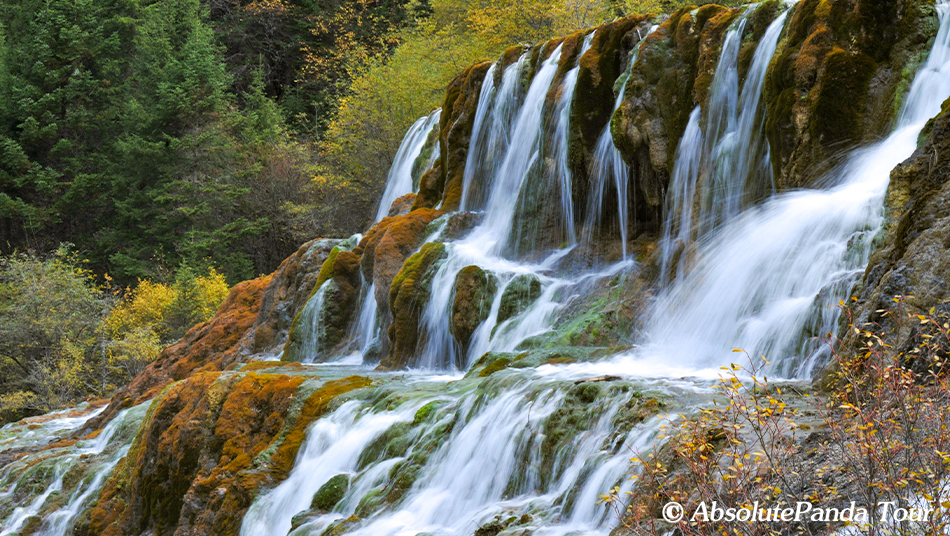
Jiuzhaigou Nature Reserve
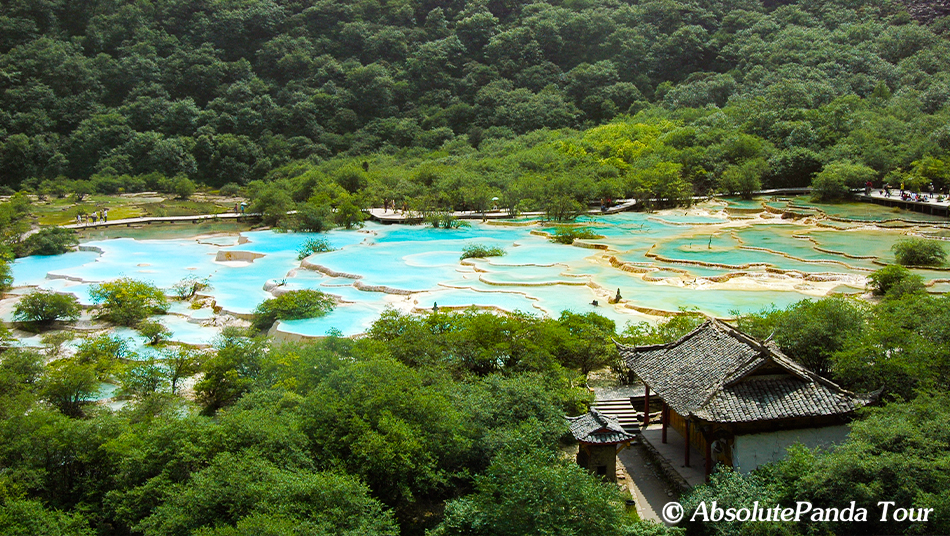
Huanglong Nature Reserve
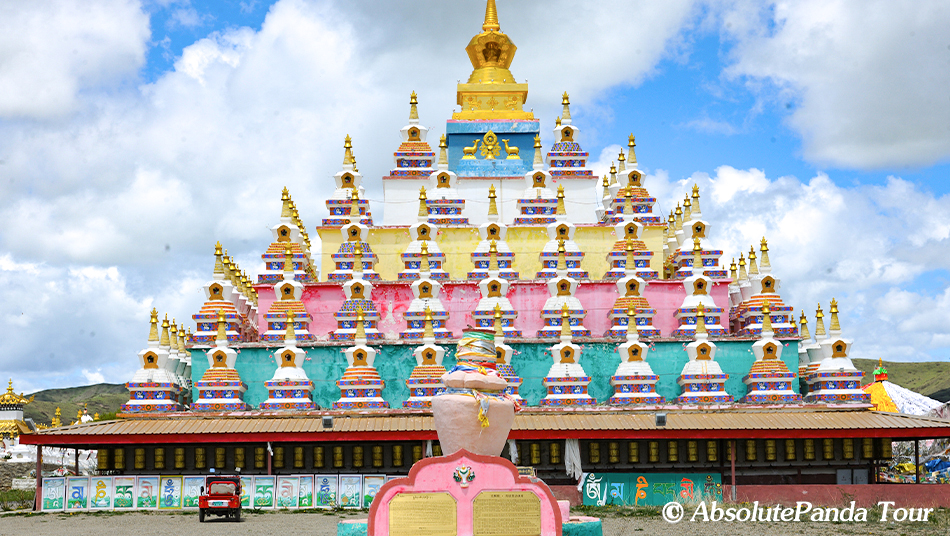
Wache Stupa Forest
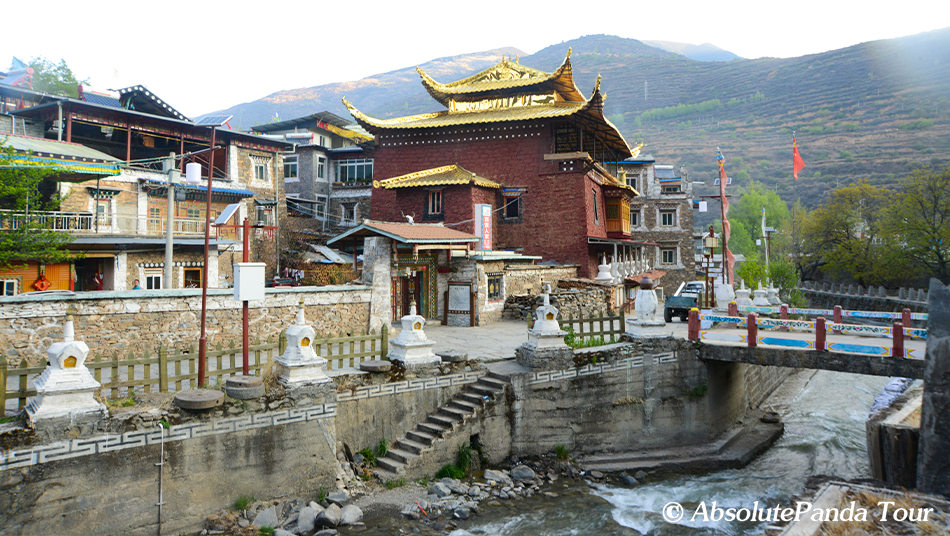
Zhuokeji Official Chieftain Village
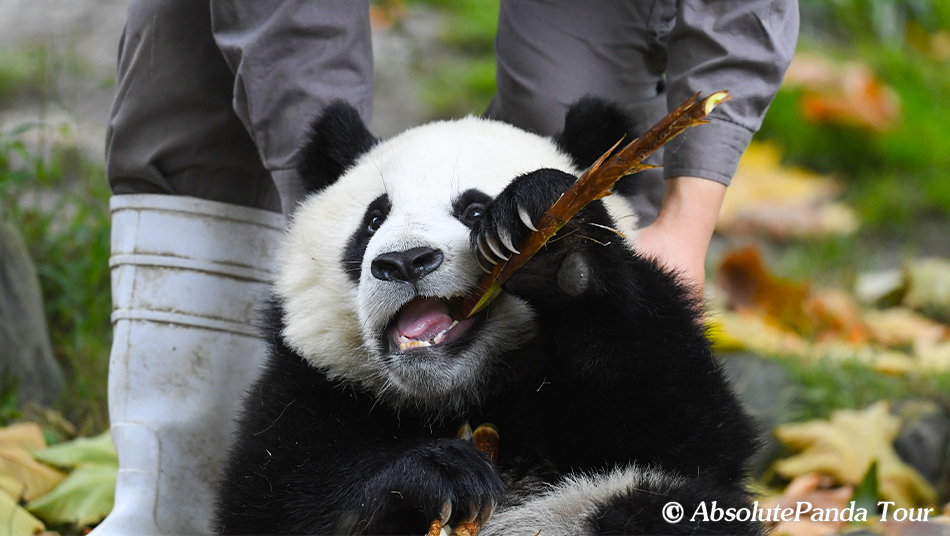
Wolong Panda Base
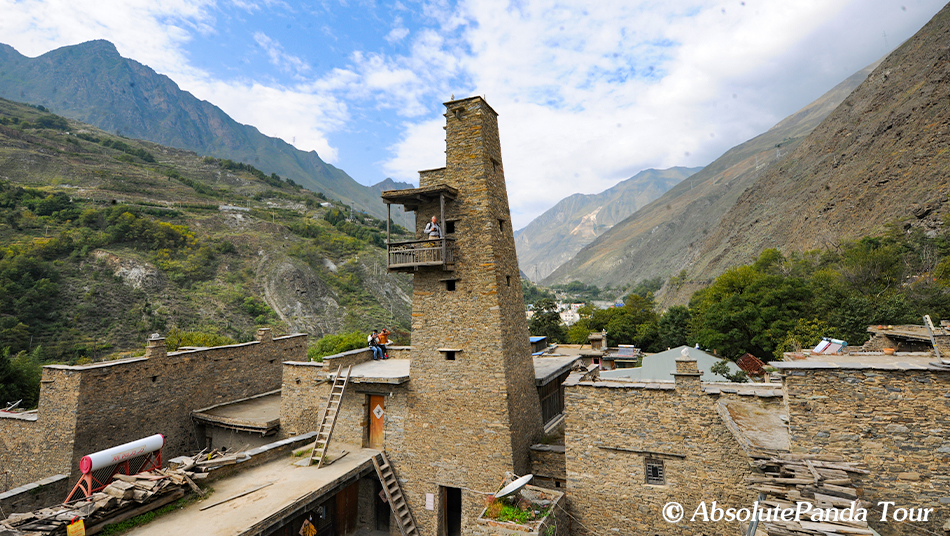
Taoping Qiang Village
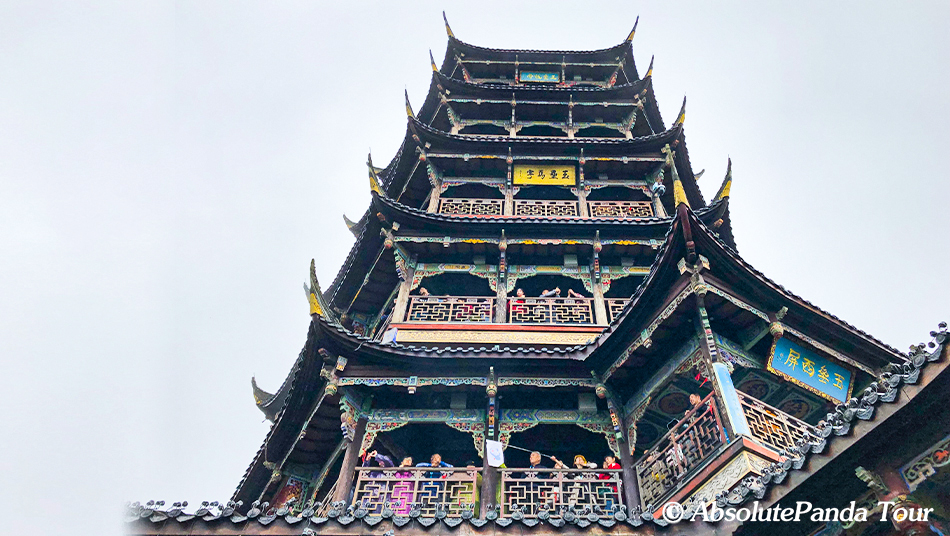
Dujiangyan Irrigation Project
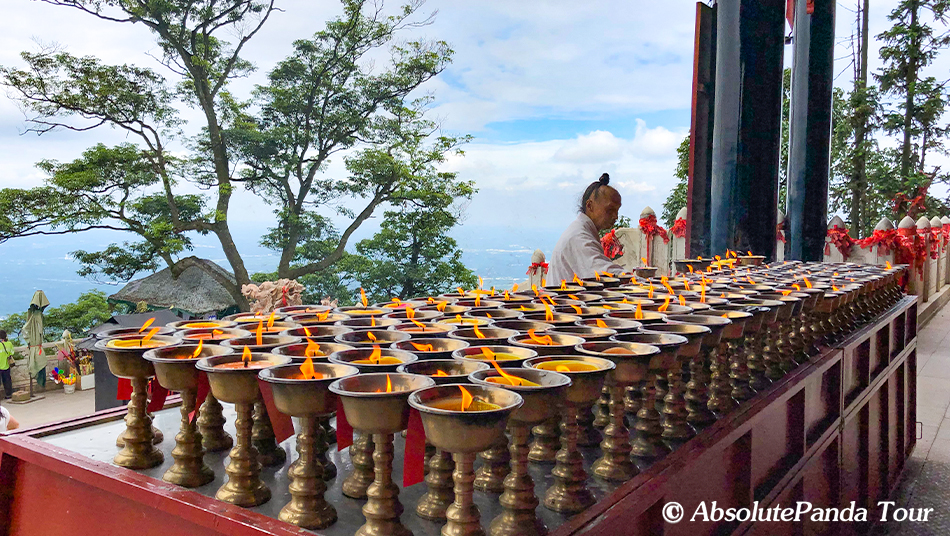
Mount Qingcheng
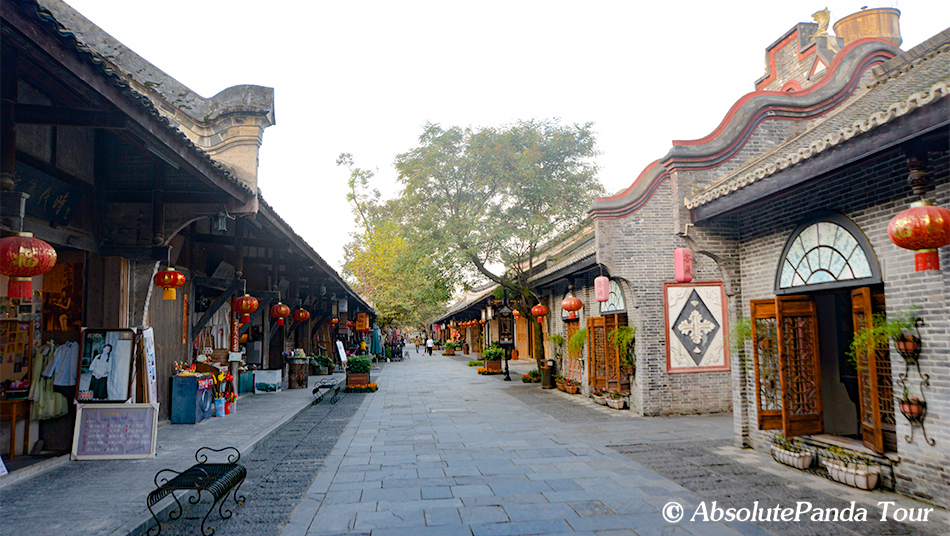
Anren Ancient Town
 info@absolutepanda.com
info@absolutepanda.com
